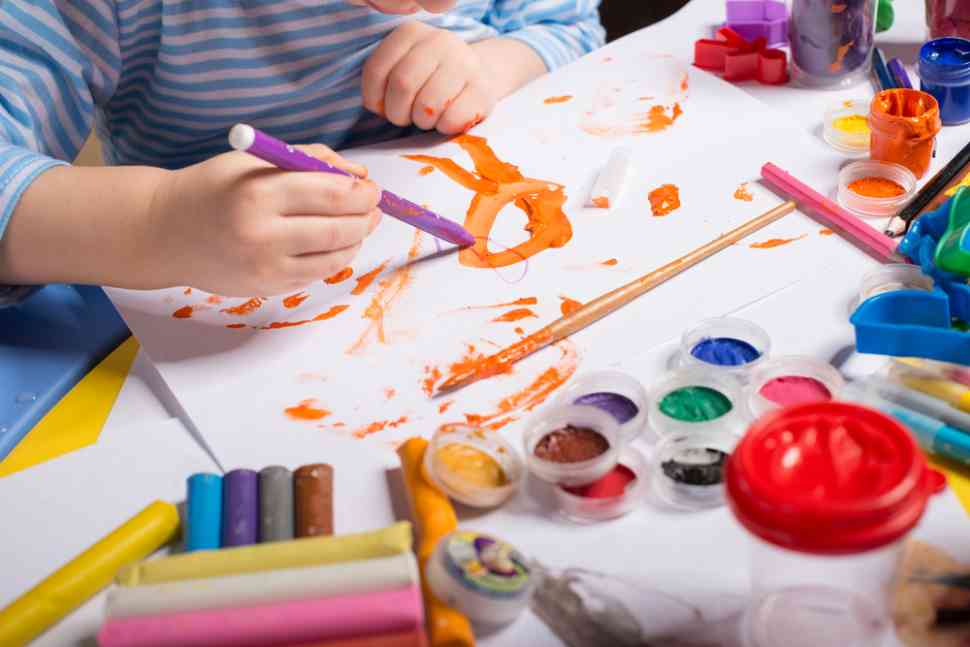How To Understand Kids Through Their Paintings

Have you ever thought of how kids’ paintings can give us a bunch of information about their inner world? Let’s have a look at some perspectives that psychologists have given over the last few years.
- The dimensions of the family members
Diagnostic criteria for the child’s emotional world are, for example, the dimensions with which each family member is depicted. Assume a child constantly paints their dad with characteristics smaller than their mom or their own. This likely means that the child has negative emotions for that person, considers them alienated from the rest of the family, and wants to place them further away. - The hands in the drawings
It is also no coincidence how a child paints the hands of family members. Suppose they often paint their mom’s arms passed around the neck of themselves. In that case, the mother tends to suppress the important desires of the child, and the child feels that she does not let them develop easily. At the same time, if one’s hands are smaller or missing from the rest of the body, this is translated as the child’s desire to punish that person for some behavior. The same rule applies if the hands are considerably larger and disproportionate to the rest of the body. Dad’s big hands, for example, may indicate the child’s fear because of some abusive attitude. - Where the child stands
At the same time, if the child paints themselves first and then the other members of the family, then this case suggests that the child seeks confirmation and love from those around them. Of course, if this happens at the age of 4-6 years, it is a natural consequence of the egocentrism experienced by children of these ages. On the contrary, if a child systematically places themselves last, they may feel that they are more distant from the rest of the family and feel isolated from the rest of the members in the house. - The first person in the drawing
More precisely, in a family plan, we have much to pay attention to. To begin with, we notice which face is painted first and which is last. If, for example, the child’s mom is painted at the beginning, then the child feels emotionally attached to her. The kid admires her and does not fear her. At the same time, they distinguish her from the rest of the members. On the other hand, if the mom is painted last or even significantly isolated from others, then the child feels emotionally distant from their mom; maybe they are afraid of her and want to remove her further from the family circle. - The colors and the size
In the meanwhile, colors play an important role too. A kid will choose specific colors to beautify their painting. For example, an emotionally stressed or abused child usually uses the frequent and excessive use of black. They may possess depressive feelings or feelings of loneliness and isolation. Perhaps Rolling stones, with their famous song ”Paint it black,” would try to express their belief that black is the color of grief and depression. On the other hand, too small drawings testify to anxiety, excessive shyness, or even the many fears of a kid. On the contrary, too large figures indicate the excessive self-confidence of a child and the search for acceptance by others.
Conclusion
Kids love to paint. From a very young age, most children will express their desire to unravel their talent in painting. This process, however, does not work only as a valuable occupation for young fellows. It can also give us interesting information about their inner world. All kinds of details can give wonderful information, and while talking to kids is important, there are other ways to see what is going on with them. When kids paint, they feel completely free to express themselves. They do not feel that they will have to worry about saying too much or saying the wrong things; this is why their pictures give us a great opportunity to understand them. Let’s have our eyes open and see if we can detect signs of abusive behaviors or problematic situations by closely examining children’s drawings.
Have you read?
Sean Rakidzich Shares His Own Strategies to Help Those in the Short-Term Rental Business.
Continuous Operational Excellence Is the Key to Sustainability by Kumar Vijayendra.
Vuslat Doğan Sabancı: Generous Listening is the missing piece for living and flourishing together.
The Cleantech Revolution is Finally Here by Dr. Joe Zammit-Lucia.
Embracing the Metaverse: How Brands are Navigating the Future of Marketing by Vitaly Gerko.
Bring the best of the CEOWORLD magazine's global journalism to audiences in the United States and around the world. - Add CEOWORLD magazine to your Google News feed.
Follow CEOWORLD magazine headlines on: Google News, LinkedIn, Twitter, and Facebook.
Copyright 2025 The CEOWORLD magazine. All rights reserved. This material (and any extract from it) must not be copied, redistributed or placed on any website, without CEOWORLD magazine' prior written consent. For media queries, please contact: info@ceoworld.biz








